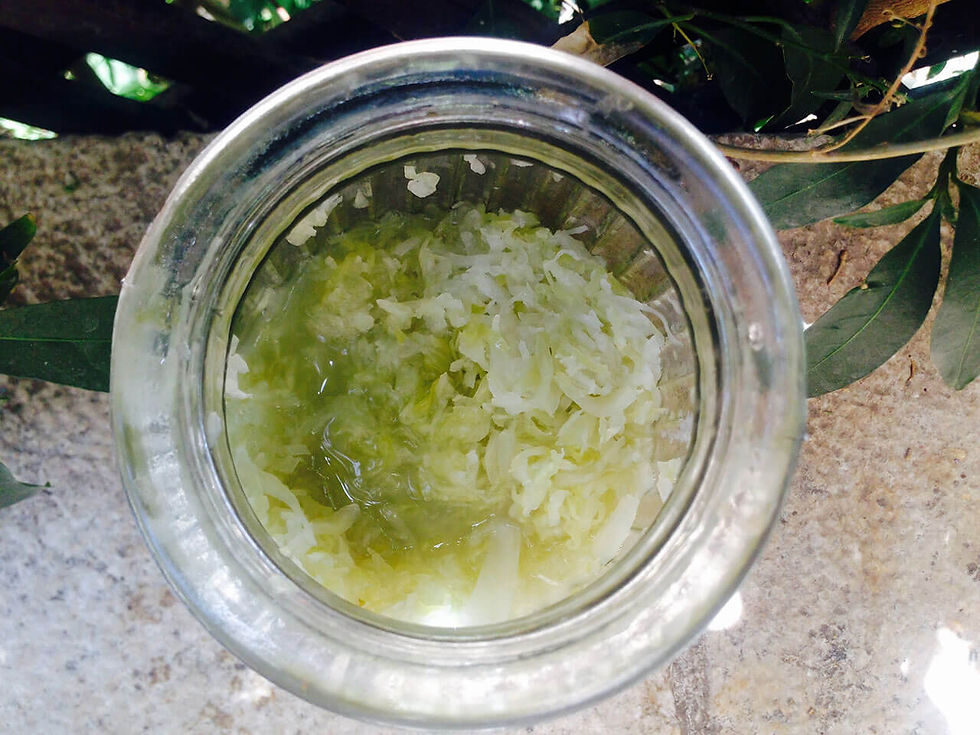Sauerkraut
- info3435807

- Jan 2, 2019
- 2 min read
“All illness begins in the gut” Hippocrates
“There are more good bacteria in a teaspoon of sauerkraut than in a whole jar of probiotics.” Sally Fallon Morell
So let's get started!

Sauerkraut is a great place to start fermenting at home. Cabbage is readily available and not very pricy so experimenting is not as painful for your wallet.
But why would we even bother Lacto fermentation to begin with?
The human body is full of bacteria. Different organs have different distinct microbiomes, the skin, the mouth, the gut, the eyes, etc. It is estimated that in the human body there are ten times more bacteria cells them there are actual human cells. That is to say that we are in symbiosis with these bacteria and we can't be ourselves without them. So it is up to us to keep them happy and functioning in a positive way.

The bacteria in our gut are colonies of many different strains and species. In a healthy person, this community is balanced. Imbalances, where one little guy gets overgrown for example, can cause illness. The most common we all know about is candida. This yeast that is naturally present in the gut, but can overpopulate and cause yeast infections (and a whole host of other symptoms). And like Hippocrates states a healthy gut is essential for healthy living.

Lacto fermentation creates superfoods that are full of bacteria, eclectically lactobacillus, which is a bacteria that doesn't only stay in the gut but also flushes through our system, so getting a moderate daily supply is important.

In addition, Lacto fermenting foods often results in even more nutrient-dense food than what we started with. Vitamin c in sauerkraut is ten-fold higher than plain cabbage. Old sailing ships took vats of sauerkraut to make sure not to get scurvy.
Antinutrients in cabbage, goitrogens, are partially neutralized during the fermentation process.

Making this wonderful healthy relish is so easy calling this a recipe is a stretch :)
Sauerkraut recipe:
Mandolin or thinly slice a white cabbage.
Weigh the sliced cabbage.
Add salt weighed at 2% of the cabbage weight.
In a bowl mix cabbage with salt.
Pound with a wooden pounder or meat hammer for about ten minutes to release juices.
Place in a wide mouth jar and press down firmly until juices are at least one inch above the cabbage.
Cover tightly and keep at room temperature for 3-5 days before refrigerating.



Comments